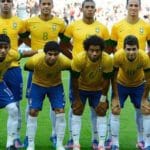Science often delves into the grand mysteries of the universe, but sometimes, the most fascinating discoveries come from exploring the seemingly trivial. Ever wonder why toast always lands butter-side down or how penguins keep their feet from freezing? These questions might seem silly, but the studies that explore them have yielded some surprisingly useful results. Get ready to have your mind blown by ten hilariously specific studies that have had a significant impact on our world.
The Physics of Belly Flops
In 2023, a study plunged into the physics of belly flops, analyzing the impact of a flat human body hitting water at high speed. Using high-speed cameras and human analog dummies, researchers examined entry angles, speed, and the water’s surface tension. They discovered that slight variations in entry angle could dramatically change the force of impact. A completely flat entry (zero degrees) resulted in the maximum force, causing that infamous stinging slap.
Believe it or not, this seemingly frivolous research has practical uses. Lifeguards and divers now use these findings to improve water-entry techniques, minimizing injury risks during rescues. It has also influenced the design of high-impact water rescue gear, like flotation devices and protective gear that lessen water slap injuries. Even sports training, especially in diving, benefits from understanding impact forces, helping athletes reduce pain during practice.
Why Toast Always Lands Butter-Side Down
Ah, the age-old question! Physicist Robert Matthews tackled this mystery in the 1990s, determining that it’s physics, not just bad luck. Toast falling from a typical table height rotates at a predictable speed due to gravity and its center of mass. Because there isn’t enough space for a full rotation, the toast usually lands butter-side down. Matthews even tested different heights and butter thicknesses, noting that more butter slightly increases the chances of a messy landing.
This study has had surprising educational and practical perks. Physics teachers use it to explain rotational dynamics in a relatable way. Plus, it has influenced packaging for fragile foods, with manufacturers designing products to minimize tumbles. Matthews even won an Ig Nobel Prize in 1996 for his humorous yet useful research!
Do Pigeons Recognize Art Styles?
In 1995, a quirky study showed that pigeons could distinguish between paintings by Claude Monet and Pablo Picasso. Researchers trained pigeons using operant conditioning, rewarding them for correctly identifying paintings by each artist. Even when shown new paintings, the pigeons consistently categorized them correctly.
This study has significant implications for understanding animal cognition and visual processing. It showed that pigeons possess advanced pattern recognition abilities, inspiring similar algorithms in artificial intelligence and machine learning. It also prompted experiments with other animals to study their ability to process abstract concepts, proving that birds are smarter than we often give them credit for!
The Mathematics of Traffic Jams
Why do traffic jams happen even when there’s no apparent cause? In 2008, researchers set out to understand these “phantom traffic jams.” They placed vehicles on a circular track and instructed drivers to maintain a constant speed. Despite the simple setup, traffic flow broke down due to minor speed variations, leading to stop-and-go waves.
The models from this experiment have been transformative. They’ve informed the development of adaptive cruise control systems in cars, which reduce unnecessary braking and smooth traffic flow. Urban planners also use this data to design smarter road systems, like ramp metering and variable speed limits, to prevent congestion before it even starts.
Why Penguins Don’t Freeze Their Feet
In 2006, scientists explored how Antarctic penguins stand on ice for hours without freezing their feet. They discovered a unique counter-current heat exchange system in the birds’ circulatory systems. Warm blood flowing to the feet transfers heat to colder blood returning from the feet, minimizing heat loss and preventing frostbite.
This study has had significant implications for human technology. Engineers have used these findings to create better insulated clothing, like heated gloves and boots. The principles have also been applied in industrial processes, designing heat exchangers in power plants and cooling systems. Turns out penguin physiology is pretty useful!
The Speed of Ketchup Flow
Ketchup lovers, rejoice! Rheologists studied ketchup’s viscosity and flow in the early 2000s, analyzing why it sticks to bottles and how its flow rate changes under different forces. They found that ketchup is a non-Newtonian fluid, meaning its viscosity decreases when stress is applied. This explains why tapping the bottle can suddenly cause a ketchup explosion after a frustrating wait.
The results revolutionized food packaging, leading to squeezable bottles and no-spill caps. The findings have even inspired better dispensers for medical gels and syrups in the pharmaceutical industry. Next time you easily squeeze out ketchup, thank science!
The Aerodynamics of Frisbees
In 2004, scientists studied the flight of Frisbees, focusing on lift, drag, and spin. Wind tunnel experiments and computer models showed that the disc’s shape and spin rate are critical for stable flight. Minor design tweaks, like enhancing edge profiles or altering weight distribution, could drastically improve performance.
This research has not only improved recreational Frisbees, but it has also informed drone technology. Engineers designing lightweight, stable aircraft have used the principles uncovered in the Frisbee study. Sports manufacturers also use these findings to create high-performance discs for ultimate Frisbee, ensuring better accuracy and longer flight distances.
Can Fish Recognize Faces?
In 2016, researchers trained archerfish to recognize human faces by displaying images on a monitor above their tank. The fish were rewarded for correctly targeting the faces they had been shown. Even when presented with new faces, the archerfish accurately identified the correct one.
This study sheds light on the evolution of facial recognition and has inspired advancements in biometric technology. Its implications extend to security systems, where understanding how simple neural systems process complex images has improved machine-learning algorithms. Who knew fish could be so smart?
The Optimal Way to Dunk a Biscuit
Physicist Len Fisher explored the ideal method for dunking biscuits (or cookies) into tea, investigating how capillary action draws liquid into the biscuit. Fisher calculated the optimal dunking time for maximum absorption without the biscuit falling apart, using mathematical models and controlled experiments.
The study became a cultural phenomenon and was later applied in food science. Manufacturers have used similar principles to improve the texture and structural integrity of baked goods, ensuring they stay intact during packaging and shipping. Now that’s some truly important research!
How Ducks Stay Dry
In 2010, a study examined how ducks remain waterproof, even in heavy rain or when diving. Researchers discovered that ducks’ feathers have a microscopic structure that traps air and repels water, thanks to barbs, barbules, and natural oils. These features create a hydrophobic surface.
This study has inspired innovations in material science, particularly in the development of water-repellent coatings for outdoor clothing, self-cleaning surfaces, and protective coatings for electronics. The study also contributed to biomimicry, demonstrating how nature’s designs can solve engineering challenges. Next time you see a duck in the rain, appreciate its natural waterproof tech!
So, who would have thought that such quirky, specific studies could lead to so many practical applications? From improving safety measures to inspiring technological advancements, these ten studies prove that curiosity, no matter how odd, can lead to incredible discoveries!
Which of these studies surprised you the most? Leave your comment below!










